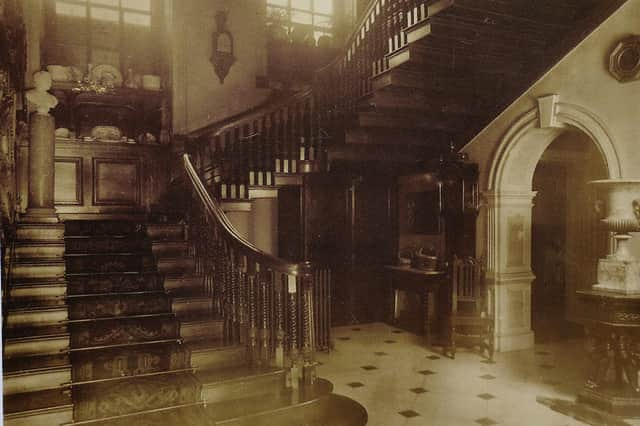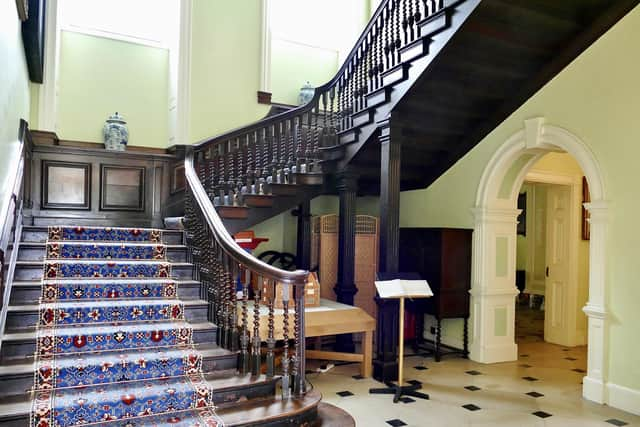The Now and Then column with Aled Jones: Focusing on Sewerby Hall and Gardens


While the vintage postcard and photograph do not show many architectorial changes, the hall’s history is interesting.
Mr Jones said: “From private estate to public park – it’s odd how things turn out. Sewerby House, built in the first decade of the 18th Century, was the seat of the Lloyd-Greame family, but it found a new use as a recreation spot when it was purchased by Bridlington Corporation in 1934. It was renamed Sewerby Hall and Park after an official opening by Amy Johnson exactly two years later.
Advertisement
Hide AdAdvertisement
Hide Ad“It’s worth coming here just to see the important Queen Anne oak staircase, featured so stunningly in this week’s postcard (based on a vintage photo from 1900).


“Note the cantilever construction, fixed at only one end so as to give a ‘floating appearance’. The swept handrail, with carved and twisted balusters, completes the alluringly beautiful effect.
“The staircase is original and dates to the founding of the estate in 1709-10.
“Built in red brick by John Greame, a resident of High Street, the house it adorned was definitely designed to impress, and is said to have replaced an ancient Manor House that had fallen into disrepair due to the Civil War.
Advertisement
Hide AdAdvertisement
Hide Ad“The Queen Anne house was enlarged in the early-to mid-19th Century with the addition of two bow-fronted wings and a rather grand orangery, popular today for concerts and recitals.
“The postcard shows a contrast from the natural clutter of a lived-in house, to the quite boring and superficial appearance of today. Doesn’t it seem wrong that such a fine building as this should be run as a museum and not also a beloved family home?
“Today, Sewerby Hall is admired perhaps more for its 50 acres of parkland than for the building itself. Nature lovers come here to savour the peace and beauty of the formal grounds and walled gardens, the latter so famed for their rare and exotic shrubs.
“These were formerly the kitchen gardens and fruit orchards of the family estate.
Advertisement
Hide AdAdvertisement
Hide Ad“Think about a location where a TV company can recreate a 19th Century kitchen garden and Sewerby Hall springs instantly to mind.
“Indeed, if the BBC ever plan a remake of the 1987 series The Victorian Kitchen Garden, they’d be hard pressed to find a better location.
“My other main hobby after collecting vintage postcards, is collecting locally addressed stamp covers.
“The centrepiece of my collection is a rare Two Penny Blue cover from 1843.
Advertisement
Hide AdAdvertisement
Hide Ad“It was sent from Bakewell to the then owner of Sewerby House, Yarburgh Greame, who had recently inherited the estate from his father. A popular and respected man, he became High Sheriff of Yorkshire in 1848.
“The great Monkey Puzzle trees to the rear of the house were planted by Mr. Yarburgh, whom we should also thank for most of the mid-19th century additions to the house.
“He also called in the famous architect Sir Gilbert Scott to design for him the neo-Norman church that still stands today near the entrance of the park.”